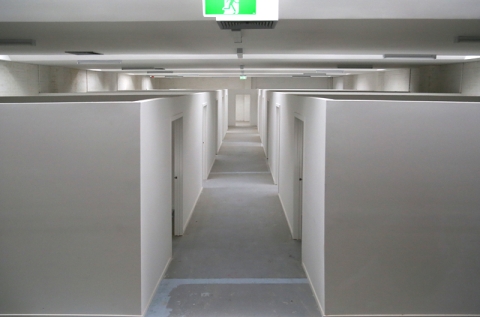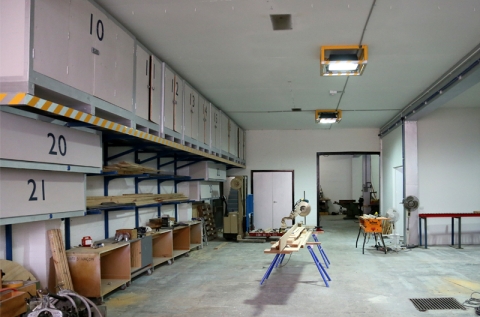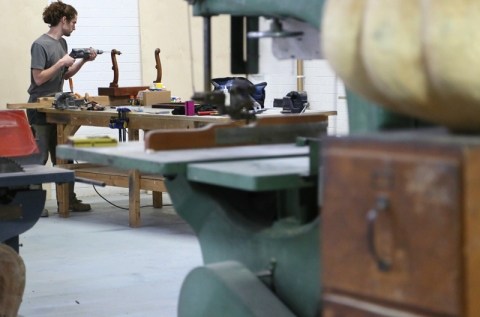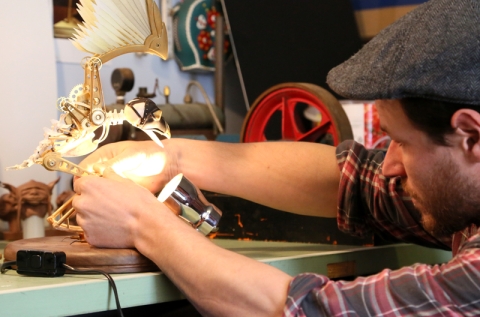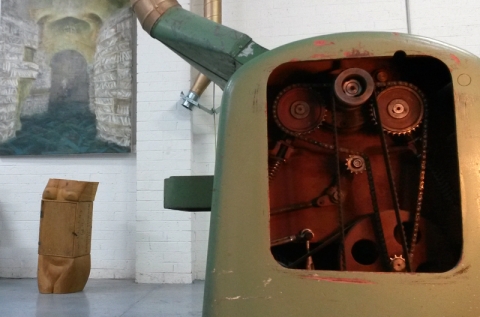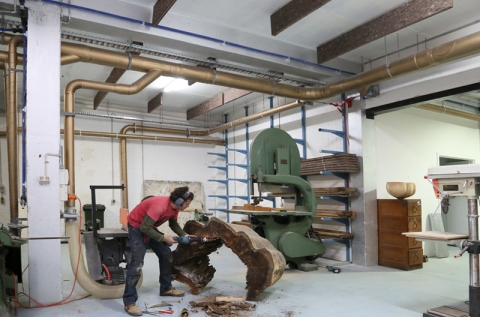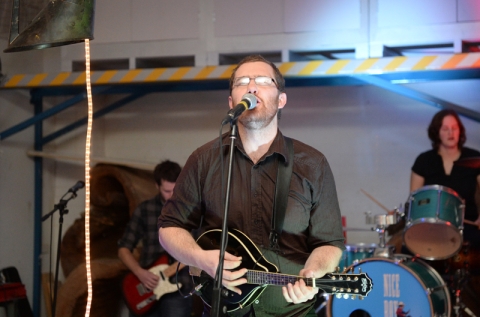Case Study
Space Tank Studio
Creative people make the most extraordinary things. A sculptor who makes massive props for music festivals pointed out to me that a television the size of a living room that’s crashed into the earth is hard to build if you don’t have the right machinery or space. He came to us for a solution. - Holger Dielenberg, Space Tank Studio

As the means of production become less and less centralised, we’re experiencing a kind of counter-revolution in manufacturing. With technologies such as 3D printing becoming far more accessible, ‘Maker Spaces’ are popping up everywhere, helping creatives to realise their ideas moments after imagining them.
We speak with one of the pioneers of the revolution in Melbourne, Holger Dielenberg, about the setting up of Space Tank Studio shared ‘makerspace’.

Holger Dielenberg
Holger Dielenberg
Space Tank Studio
How did the Space Tank Studio concept come about…and who is involved?
There is a need for an inner-city makerspace that provides top-notch fabrication facilities to artists, designers, inventors and entrepreneurs – without costly overheads.
Creative people make the most extraordinary things. A sculptor who makes massive props for music festivals pointed out to me that a television the size of a living room that’s crashed into the earth is hard to build if you don’t have the right machinery or space. He came to us for a solution.
My professional career spans creative warehouses, VFX studios and traditional boat building. During that time, I’ve participated in a bizarre range of projects and wanted to find a way to harness the lot. As it unfolded, the compelling nature of Space Tank Studio infiltrated a variety of industries and attracted likeminded people who were all galvanised by the same vision; to create a custom-built makerspace to give talented makers the facility to bring their dreams to life.

Why do you feel there is a need for a resource such as Space Tank Studio?
Well you know, glue and porridge look awfully similar.
For example a Chilean artist who walked into the studio last week prepares his materials on the back porch and then builds the final piece in his living room while the baby is being fed. That’s a recipe for disaster. That poor guy must be so frustrated. He was beside himself when he toured our space. I love that, the ability to provide someone like that a meaningful solution to their creative vision.

We’re entering the mobile ‘on demand’ version of everything. Office in the palm of your hand, software in the clouds, memory on a stick, flat-pack furniture. Condensing resources into a user-friendly, ‘come as you please - go when you want’ formula is a natural extension of where technology and consumerism are driving us. Plus lower commitment to overheads is always a bonus.
Could you tell us about the people who are already using the space, and those you hope to attract?
So far there are furniture makers, sculptors, set and prop designers, public installation artists, fashion accessory designers and immersive technology start-ups that are coming to the space. We hope to continue attracting these kinds of people because Space Tank Studio is built for them.
We are also finishing an artist residence that will be reserved for international artists and designers. If I can secure industry partnerships then the goal is to offer seasonal residencies for free.

What was required to secure the space?
A whole lot of gumption! I didn’t want the fear looming over my head of being ousted by a landlord chasing redevelopment dollars so I summoned my entire barbarian heritage and screwed it up into a ball of steel. I slid it across our real estate agents desk in the form of an offer to purchase a stagnant listing on his industrial property sheet. The rest, as they say is history.
The warehouse was pretty much perfect in every way. It’s located in North Coburg which still has that familiar grungy feel that some of us will remember from the nineties. It met a lot of operational functions we required and best of all; it had a goods lift.

What were the costs?
Sanity and sleep are definitely high on the list. But in the real world of dollars, our biggest costs were to build the infrastructure and to purchase the machinery and technology. Fortunately we found key people who embraced the vision with gusto. With a magpie sense for a bargain the internet was trawled for liquidation auctions and farm sales to find the machinery we needed in the workshop.
What were the resources available to you?
Friends are an amazing resource. We’ve received so much help and encouragement. Doors opened to advocacy and advice that would normally stay closed had this venture not begun. It’s humbling to recognise and acknowledge the generosity of everybody who lent a helping hand or gave advice.
Also by pursuing strategic partnerships, I secured specialist equipment and technology sponsorships. This has paid off and now in turn, I can offer 3D printing, CNC laser cutting and engraving and multi-process welding at affordable prices to artisans who require it.

What were/are the obstacles and how did you overcome them?
I am an artist by nature and a businessman by rote. Just like every person who has created a niche business will appreciate, the biggest hurdle is to combine these two parts of the mind. Aligning vision and execution is akin to a high wire juggling act that requires balance, practice and poise.
What were/are the risks?
Machines can maim! The inherent risks involved when using machinery multiply when you have many people using them. It’s up to us to ensure current Worksafe standards. Similarly, it is up to people who sign up to use our equipment to maintain a vigilant work ethic. We take the promotion of an informed, safe and considerate work culture very seriously.

How do you foresee the space evolving over time and what are your future plans?
We’re evolving into a vibrant hub of creativity where knowledge and skill sharing takes place. A place where jaw dropping art and design can emerge and where innovators and start-ups can be nurtured.
Our plans for the future involve building further partnerships with Universities, industry suppliers, arts advocacy groups and galleries in a bid to knit a fabric that can assist the artist’s, designers and start-ups that come to us.
Spaces are now available at Space Tank Studio. See their listing here...
Space Tank Studio
spacetankstudio.com.au

